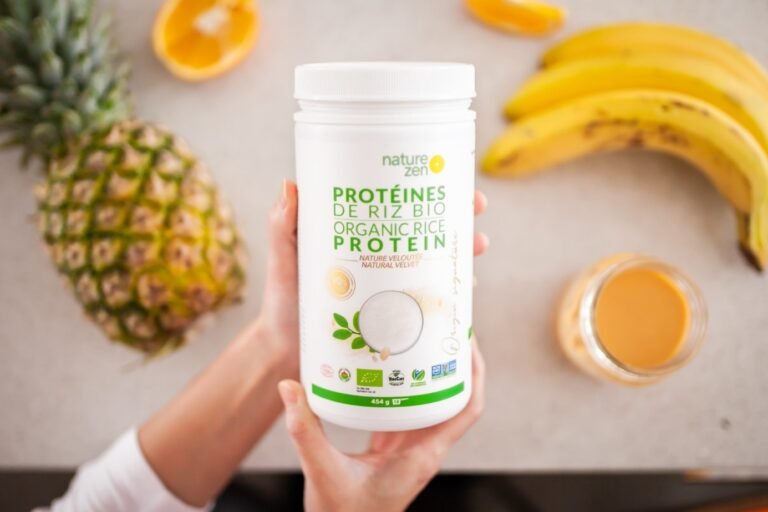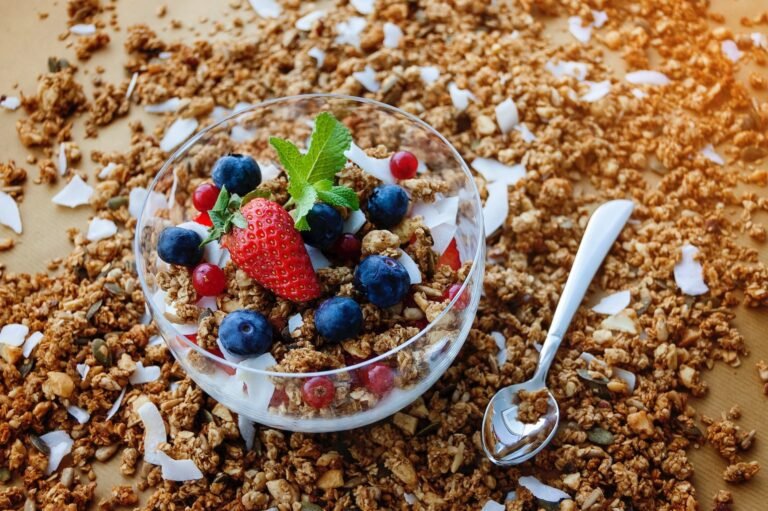Muscle Definition: Which Dietary Plan?
Building a diet plan to dry out means organizing your day with several dietary meals whose caloric intake must be sufficient to burn fat while maintaining muscle mass. In general, this calorie intake is lower than your mass gain intake and continues to decrease as you progress towards your goal. More specifically, you will absolutely need to know the quantity of macronutrients necessary to achieve quality muscle definition.
We reveal the strategies to adopt to effectively cut, as well as some examples of food plans for muscle definition.
How To Eat To Dry?
Protein helps maintain muscle tone and improves fat burning. Prioritize protein in your diet if you want to achieve good muscle definition.
1: LOTS OF PROTEIN
Be sure to maintain a high protein intake in order to maintain your muscle mass, which is sensitive to catabolism during draconian diets associated with sustained sports activity.
2: GOOD QUALITY LIPIDS IN A REASONABLE QUANTITY
Know that you must completely eliminate lipids from industrial or processed foods (cooking fat, prepared meals, fast food, etc.). Prefer raw oils and all healthy foods containing good quality fats. Make sure these foods provide Omega 3s.
3: Carbohydrates, To Be Reduced Gradually
It is important to note that carbohydrates are essential for maintaining a high metabolism. Intakes that are too low are detrimental to performance. Conversely, too many carbohydrates limit weight loss. Gradually reduce carbohydrate intake to better burn your body fat stores.


What Foods To Eat For Dry Skin?
Meat and fish: defatted ham, canned tuna, chicken breast, low-fat red meat (5% maximum), salmon, hake, egg whites, etc.
Dairy products: 0% cottage cheese, for people who tolerate its lactose content, skyr and Greek yogurt.
Starchy foods: prefer foods such as oatmeal, lentils, brown rice, sweet potatoes, wholemeal bread and wholemeal pasta, for example, which have a low glycemic index.
Vegetables: vegetables are a source of vitamins, minerals, dietary fiber and they are low in calories. In addition, you can consume them at will, especially green vegetables.
Fruits: one or two per day, only before and after training.
Fats: oleaginous dried fruits such as walnuts, almonds or hazelnuts, and virgin oils such as olive oil, rapeseed oil or walnut oil. Eat them raw to enjoy their benefits. Coconut oil and avocado are also interesting foods for the supply of good quality fats.
Drinks: drink only water (2.5 to 3 litres/day, or even more depending on your personal needs). Do not drink alcohol or sugary drinks.


How Many Carbohydrates Per Day During A Cut?
- It is customary in the bodybuilding world to “cut” hydrates to encourage the body to find energy in fat stores, but also to keep insulin levels low. This same custom requires that at the end of each week, the athlete fills up on carbohydrates and forbidden foods, so as to restart the metabolism.
- It is an approach that is both logical and practical but does not take into account all the parameters that allow the body to effectively oxidize fat.
- Originally, the role of adipose tissue is to store the excess energy absorbed, in order to be mobilized later in the event of a period of food restriction. But prehistory is far behind us and fat stores are now maintained by a chronic caloric surplus and a flagrant lack of physical activity.
- Therefore, it is the calorie deficit that allows the mobilization of fats, which the body breaks down to produce energy. Cutting carbs by getting at least as many calories from fat and protein won’t help you cut faster.
- Complex carbohydrates stimulate very little insulin and provide energy and fiber essential for health, digestion and satiety. Why starve yourself when satiating foods can help you dry out?
- Energy is essential to mobilize and oxidize fats. Without carbohydrates, the body slows down its metabolism in order to preserve its energy stores.
- Gradually reduce your caloric intake from fats and carbohydrates, without touching proteins. Ideally, your daily intake
- er in carbohydrates should not fall below 50g (absorbable) at the end of the cut. Be sure to maintain an adequate intake of essential fatty acids, especially omega 3.


How To Calculate Your Calories To Dry?
- For an average-sized woman aged 25 to 50, the daily requirement is 2000 Kcal.
- For an average-sized man of the same age group, the caloric needs are estimated at 2600 Kcal.
- These maintenance caloric intakes determine the amount of energy an individual will need to consume each day to stay healthy and perform normal activity.
- These needs must be revised upwards for very active people, as well as sportsmen.
- Thus, 300 to 500 additional calories are to be added to these daily needs for people who have sustained physical activity.
- To obtain tailor-made values, apply the Mifflin St Jeor formula:
- Men: (body weight (in kg) x10) + (height (in cm) x 6.25) – (age (years) x5) + 5
- Women: (body weight (in kg) x10) + (height (in cm) x 6.25) – (age (years) x5) -16
- SUPPLEMENTATION: BET ON PROTEIN POWDER AND FAT BURNERS
- Protein powders and fat burners are the preferred dietary supplements for weight loss.
-
Fat Burners
Fat burners are dietary supplements specific to muscle definition. They allow to overactivate the metabolism in order to create a maximum caloric deficit and thus accelerate the burning of fat.
-
PROTEIN POWDER
They have a higher biological value than most dietary proteins, and they are purified of useless elements such as lactose and sugars, for maximum benefit on muscle definition.
- Other Dietary Supplements Can Be Added To Your Diet
- To better mobilize fat during training: L-carnitine
- To target the abdominal strap and help stabilize weight: CLA and probiotics
For better muscle recovery: BCAAs, amino acid complexes and multivitamin complexes







